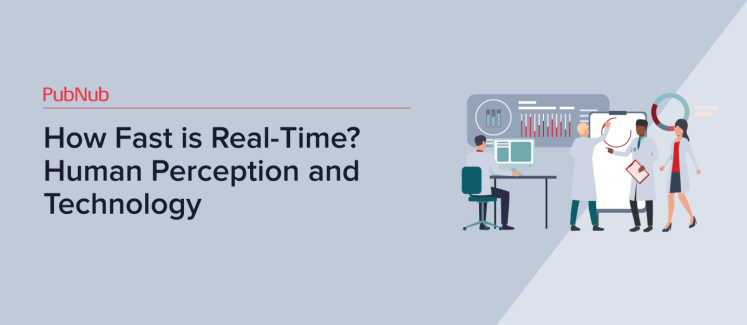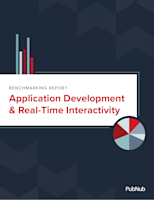How Fast is Human Reaction Time? Human Perception & Tech

How fast can a human process input, and what is reaction time?
Reaction time is the interval between the presentation of a stimulus and the initiation of the brain & muscular response to that stimulus. It measures how quickly an organism can respond, and it is a crucial aspect of human performance in many activities.
Human reaction time summary:
Brain's interpretation of the impulse 13-70ms
Fastest possible reaction time 100-120ms
Average (normal) reaction time >250ms
The average human reaction time is on the order of a quarter of a second (250 milliseconds). Don’t believe it? You can test your own reaction time with this little reflex test.
Fastest human reaction time is around 100 – 120ms As you know, some have better reaction times than others. Fighter pilots, Formula One drivers, and championship video game players fall into the 100 – 120ms bucket on the left side of the reaction time curve.
Types of Reaction Time:
Simple (reflex) Reaction Time: The time taken to respond to a single stimulus with a single response.
Choice Reaction Time: The time taken to consciously respond to one of several stimuli, each requiring a different response.
In 1968 Robert Miller published his classic paper Response time in man-computer conversational transactions in which he described three different orders of magnitude of computer mainframe responsiveness:
A response time of 100ms is perceived as instantaneous.
Response times of 1 second or less are fast enough for users to feel they are interacting freely with the information.
Response times greater than 10 seconds completely lose the average web user’s attention.
From this Miller concluded that a consistent 2-second response would be ideal. Years later this same value of 2 seconds has been used as a performance target for web-based applications. Today’s real-time applications, however, require near-instantaneous responsiveness. Does even 100ms cut it? The answer depends on the context.
Factors Influencing Reaction Time:
Stimulus Type Different types of stimuli (visual, auditory, tactile) can affect reaction time. Generally, people respond faster to auditory stimuli than to visual ones.
Stimulus Intensity: Stronger stimuli can lead to quicker reaction times.
Complexity of Response: Simple tasks usually result in faster reaction times compared to complex tasks that require more processing.
Individual Differences: Age, level of fatigue, and other individual factors can influence reaction time.
State of Attention: Being more focused and attentive can reduce reaction time.
Practice and Training: Repeated exposure and practice can improve reaction time.
Environmental Factors: Conditions like lighting, noise, and distractions can affect reaction time.
Processes that contribute to the final human reflex time
How much time human spent receiving data versus mentally processing and physically reacting?
Real-Time Latency: From Eye to Brain Response
Reaction time is a complex subject and includes several different components of mental processing including:
Sensory perception (i.e. vision, hearing, touch, taste, smell)
Receipt of input into our consciousness
Context applied to the input
Decisions made based on processing output.
To really understand how fast real-time is to the human brain we’ll focus on the Sensory Perception phase. This is where our senses receive the incoming data from the outside world whether that be visual or auditory.
For example, the time that an image of a tiger arriving on your retina takes to travel down your optic nerve into the visual cortex is incredibly fast. New studies show that humans can interpret visual cues seen for as little as 13 ms (about 1 in 75 frames per second).
Average brain reaction time for humans is 13-70 ms As the brain receives the incoming data stream, an asynchronous process acknowledges the input and admits it into our consciousness.
Consciousness processing takes about 75 to 150 ms. Now aware of the incoming data stream, another part of the brain applies context to the stream so that a decision can be made about how to react.
All this happens very quickly. (Cats are nearly twice as fast response times)
How Does Unwanted Latency Impact Human Performance?
While there is more involved in human reaction time than just mental processing, the important concepts here are:
1. Humans can respond to incoming visual stimuli at a maximum rate of about 13 milliseconds. Any data stream faster than this would surpass our perceptual limits.
2. Increasing latency above 13 ms has an increasingly negative impact on human performance for a given task. While imperceptible at first added latency continues to degrade a human’s processing ability until approaching 75 to 100 ms. Here, we become acutely aware that input has occurred. From this point on, the brain relies on adapting to conditions by anticipating input rather than simply reacting to it.
In a duel, for example, a 100 ms lag matters. Especially if it is random and cannot be anticipated.
Implications for Real-Time Application Developers
Real-time applications have varying tolerances to data stream latency. Typically those applications with very demanding targets include:
It is these types of applications in which real-time human perception and interaction are required. Given the resources required to build and maintain a real-time network to support these types of apps, many developers make the strategic decision to outsource the messaging layer in order to focus more on the application itself.
Online Gaming
While turn-based games, role-playing and strategy games typically do not rely on real-time movements or actions and can tolerate latencies of up to 500ms or more, for Massive Multiplayer Online Gaming (MMOG), real-time is a requirement.
As online gaming matures, players flock to games with more immersive and lifelike experiences. To satisfy this demand, developers now need to produce games with very realistic environments that have strict data stream latency requirements:
300ms < game is unplayable
150ms < gameplay degraded
100ms < player performance affected
50ms > target performance
13ms > lower detectable limit
A delay of even 100 ms reduces player performance in Twitch games by a measurable amount. It becomes noticeably difficult to track targets effectively and forces players into predicting movements.
Overall game enjoyment continues to decrease as latency increases and players experience jerky playback, ghosting, and out-of-sync behavior that ultimately ruin the game for all players involved.
Given these parameters, to be successful MMOG architecture must consider network performance as a fundamental requirement to ensure Quality of Experience for gamers. This architecture needs to be capable of delivering thousands of simultaneous data streams with latencies as low as 50 ms or better and to make it even more challenging, it must do so at scale for players in different geographic regions, on different access networks, using a range of devices.
“PubNub allows us to focus on our application, rather than the backbone network that supports it and the worries that accompany that. Knowing that we don’t have to setup a whole monitoring system to make sure our backbone network is running and sending messages is amazing; no crashing, no hardware reboots, and no worries,” said James Ross, co-founder and Operations Manager of NodeCraft Hosting.
Bidding & Auctions
With any auction, every split second counts. Success depends on making all bidders feel there’s seamless, reliable, real-time engagement for everyone, wherever in the world they may be. Having the right end-to-end platform for delivering real-time capabilities like real-time notifications, alerts, and updates is an imperative part of the user experience.
A reliable and scalable platform solution is the key to online auction success because:
It gives users the confidence they’re on top of every fresh bid or other development during an auction so they can make their next decisions about bidding (or not)
It maximizes participation among prospective bidders, contributing to higher top bids
It strengthens the credibility of the auction and the organization conducting it
It keeps bidders continuously engaged by delivering the same lively, competitive feeling as a real-world, in-person auction
Real-Time Collaboration
Another interesting example of the use of real-time data is in the area of e-learning and collaboration. In the online classroom, it’s essential to have reliable real-time communication between devices. When dealing with a classroom full of students with short attention spans, devices need to be able to signal between each other as quickly as possible. Otherwise, you’re losing the attention of the entire class. However real-time network design is an outside core competency for most.
“We didn’t know whether we should hire people to do that, whether we’d have to increase the size of the team, and eventually we just sat down and thought, ‘this isn’t what the core of our business is about. We shouldn’t really be spending loads of money and time trying to make real-time work, when we should be focusing on our own business challenges. Real-time was a requirement for our business, but not a business challenge that we should have to solve,” said Liam Don, Co-founder and CTO of ClassDojo.
Live Entertainment
Successful virtual events hinge on engaging both performers and attendees. Despite virtual events becoming commonplace, not every organizer (or platform) offers essential features for interactive experiences. Developers should prioritize:
In-app chat with Presence, Reactions, and Typing Indicators
Notifications to keep viewers engaged and informed
Unlimited conversation streams and users to handle high traffic
Real-time profanity filtering and translation for civil communication
Interactive polls, quizzes, and leaderboards for engaging audiences
PubNub and Real-Time
PubNub real-time data API is flexible, so you can roll out these features quickly.
Talk to an Expert
Let's connect to discuss your real-time project.
Our globally available messaging infrastructure then lets you expand as your app, and needs, evolve. Getting started is easy. And, if you have any questions, we offer support 24/7 worldwide. With PubNub, you can start building real-time...today.


